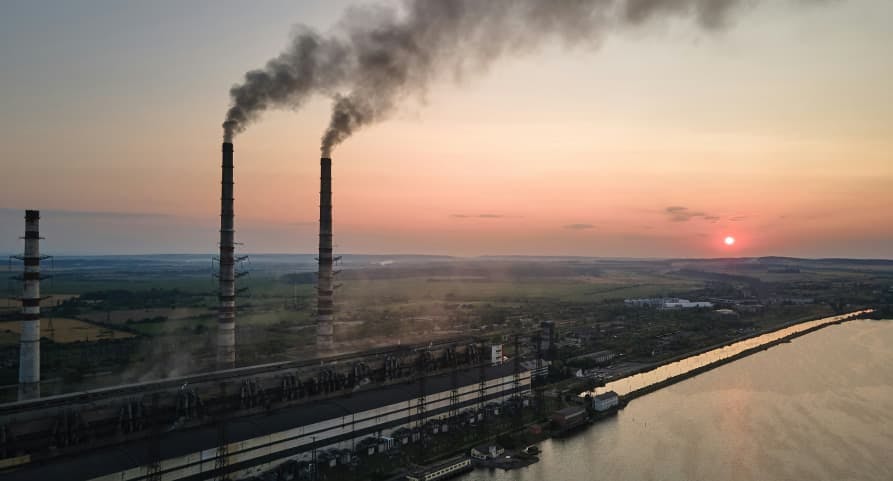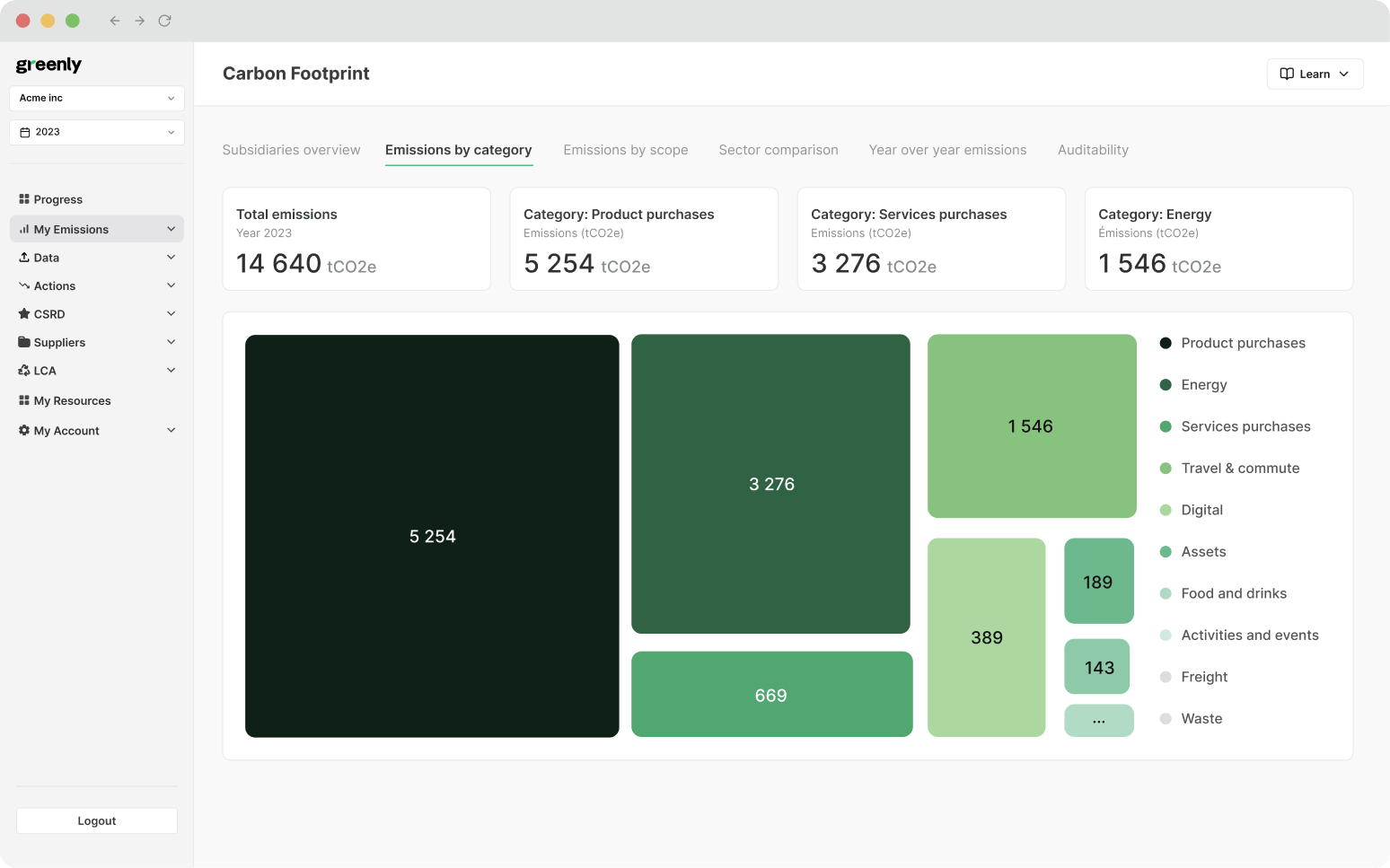ESG / CSR
Industries
What is a Global Warming Potential (GWP)?



Key Topics You’ll Learn About in This Article
The role GWP plays in our society as climate change persists
The various substances and activities that contribute the most to a high GWP
How to mitigate extreme levels of GWP
These days, when it comes to businesses and projects promoting their efforts to protecting the environment and mitigating excess emissions – we’ll often hear about carbon dioxide, but not the other elements that can impact our atmosphere in terms of Global Warming Potential (GWP).
Global Warming Potential (GWP) refers to the method used to determine how potent a specific greenhouse gas is in comparison to carbon dioxide.
In this article, we’ll explain what Global Warming Potential is, how it is calculated, examples, and how we can reduce the impact of these greenhouse gasses.
What is Global Warming Potential (GWP)?
Global Warming Potential, often shortened as GWP, refers to how potent each molecule of a greenhouse gas is in terms of how long it has been active in the atmosphere.
The current Global Warming Potential (GWP) factors that are used to calculate how much heat a specific greenhouse gas will trap over a set amount of time has been used for over 100 years.
In short terms, Global Warming Potential (GWP) works to help us better understand the negative impact created by the various greenhouse gasses (GHG) emissions we are producing on a daily basis.
How is GWP calculated?
Global Warming Potential (GWP) is determined by two factors:
Ultimately, Global Warming Potential (GWP) can help policymakers to better understand and prioritize which greenhouse gasses must be avoided to improve current international climate change policies – such with the Paris Climate Agreement.

Examples of Greenhouse Gasses That Are Measured by Global Warming Potential (GWP)
Greenhouse gasses that are often measured in terms of GWP in comparison to carbon dioxide (CO₂) include methane (CH₄), nitrous oxide (N₂O), and various chlorofluorocarbons (CFCs).
However, it is important to note that any and all greenhouse gasses can be compared to the GWP of 1 created by carbon dioxide – such as with ammonia, hydrocarbons, or HFOs: all of which have a GWP equal or even lower than carbon dioxide.
Some examples of gasses that will be measured by Global Warming Potential (GWP) include:
- Methane (CH₄) – This greenhouse gas has a Global Warming Potential (GWP) of about 27-30 over 100 years, making it up to 30 times more effective at trapping heat in comparison to carbon dioxide.
- Nitrous Oxide (N₂O) – As a greenhouse gas with a GWP of almost 300, nitrous oxide is one of the most dangerous high GWP pollutants.
- Chlorofluorocarbons (CFCs) – In addition to Hydrofluorocarbons (HFCs), Hydrochlorofluorocarbons (HCFCs), Perfluorocarbons (PFCs), and Sulfur hexafluoride (SF6) – these greenhouse gasses are oftentimes referred to as “high GWP gasses”. This is because they have the ability to trap up to tens of thousands of GWP in accordance with their given amount of mass.
The table below will further compare the differences between these listed substances:
| Gas | Source | GWP (100 years) | Environmental Impact |
|---|---|---|---|
| Methane (CH₄) | Livestock, landfills, natural gas production | 28–36 | Powerful greenhouse gas that contributes to global warming over a shorter period but is less persistent than CO₂. |
| Nitrous Oxide (N₂O) | Agricultural practices, industrial activities, fossil fuel combustion | 298 | Long-lasting gas that contributes to both global warming and depletion of the ozone layer. |
| Chlorofluorocarbons (CFCs) | Refrigerants, aerosol propellants (now largely phased out) | 4,600–10,900 | Extremely potent greenhouse gases that damage the ozone layer and persist in the atmosphere for decades. |
Many people have a tendency to focus on the impact created by carbon dioxide emissions, but Global Warming Potential can help shed light on the substances that could prove even more damaging to our environment.

Why is Global Warming Potential (GWP) Important?
Global Warming Potential (GWP) is important as it can allow policymakers and the general public alike to realize that climate change and excessive heat are being exacerbated by not only carbon dioxide, but other potentially more potent greenhouse gasses.
Therefore, Global Warming Potential (GWP) is imperative in helping lawmakers and international organizations buckle down on prohibiting the various substances most harmful to our atmosphere..
The same goes for various, more potent greenhouse gasses in the atmosphere – it is equally and perhaps even more important to take those into consideration as opposed to the GWP of 1 associated with carbon dioxide emissions.
The overview cards below will provide additional reasons why Global Warming Potential (GWP) is important:
Prioritizing Emission Reduction
Global Warming Potential (GWP) helps policymakers identify which greenhouse gases are most harmful, allowing them to prioritize reductions or eliminate the most damaging substances.
Benefit Individual Industries
GWP helps industries like agriculture and aviation better understand and manage the climate impact of their activities.
Boost Public Awareness
GWP educates the public on greenhouse gas impacts and encourages emission reductions in everyday spaces like gyms and schools.
Improve the Carbon Market
GWP standardizes the value of greenhouse gases, helping assign accurate value to carbon credits and offset projects.
Strengthen Climate Legislation
GWP helps predict long-term impacts of gases like methane, supporting stronger climate laws and compliance with international agreements such as the Paris Agreement.
Support Long-Term Climate Planning
By comparing short- and long-lived greenhouse gases, GWP enables governments and organizations to make smarter long-term climate decisions.
Overall, the main goal of Global Warming Potential (GWP) is to determine which substances could prove most detrimental on our journey to decarbonization, reducing air pollution, and fighting climate change as a whole.

Real Life Examples of Global Warming Potential (GWP)
Examples of greenhouse gasses with a high Global Warming Potential (GWP) being used in everyday life include agriculture, air conditioning, and refrigeration.
Methane Emissions in Agriculture
Used in manufacturing, industrial processes, and agriculture – high GWP pollutants such as methane contribute a significant amount to the current rise in global temperatures.
However, methane emissions continue to persist – with agriculture accounting for 32% of methane emissions as a result of tending to livestock and manure.
The vertical timeline below will reveal how methane emissions in agriculture impact the planet:
1. Livestock Digestion & Manure 🐄
Ruminants (like cows and sheep) produce methane during digestion, and manure releases additional methane as it decomposes—especially in wet or oxygen-poor storage systems.
2. Methane Builds Up in the Atmosphere 🌫️
Once released, methane accumulates in the air and acts as a heat-trapping gas—meaning it contributes to warming even when emitted in smaller quantities than CO₂.
3. Strong Heat-Trapping Effect 🌡️
Methane is highly effective at trapping heat, accelerating near-term warming and amplifying temperature spikes compared to slower-acting greenhouse gases.
4. Hotter Temperatures Intensify Extremes ☀️🔥
Extra warming can worsen heatwaves and drought conditions, increasing stress on crops, livestock, and ecosystems—while raising the likelihood of climate-related disruptions.
5. Feedback Loops Can Increase Emissions 🔁
Warmer conditions can boost methane release from other sources (like wetlands), while agricultural systems may expand or intensify to meet demand—creating more methane over time.
6. Impacts on Food Systems & Nature 🌾🌍
Warming driven by methane contributes to shifting rainfall patterns, lower yields in some regions, biodiversity loss, and increased pressure on land and water resources.
7. Rapid Methane Cuts = Fast Climate Benefit ✅
Because methane is short-lived compared to CO₂, reducing agricultural methane (feed changes, manure management, better systems) can slow warming sooner and reduce near-term climate risks.
Studies show that methane, while more potent than carbon dioxide, can break down within a decade – whereas CO₂ can remain in the atmosphere for centuries.
Therefore, there would be a pivotal change in global warming if we made an increased effort to reduce methane emissions in the near-term to remain aligned with our current path to refrain from exceeding 1.5°C.
HCFCs in Manufacturing
High GWP isn’t just applicable in agriculture, but also for several industrial processes – such as in air conditioning units and refrigerators.
Did you know that phasing out the use of HCFCs could help to prevent the planet from warming an additional 0.5 °C by 2100?
HCFCs, also classified as ozone depleting substances, are frequently used for refrigeration and air-conditioning – with the phaseout process for these substances having started only as recently as 2020.
Furthermore, even as these substances are being phased out – many countries partake in the market to recycle HCFCs for further use. This demonstrates our perilous dependence on ODS and our dire need to find lower GWP alternatives.
Low GWP for Refrigeration
Luckily, there is a growing cognizance in regards to the existence of low GWP refrigerants – such as with HFOs including R-1234yf, R-1234ze and R1233zd.
This transition to the use of low GWP refrigeration could help to reduce the environmental impact created by many consumerism based industries in the United States – such as the air conditioning used at industrial facilities or shopping malls.
The three way battle cards below will compare methane emissions, HCFCs, and low GWP for refrigeration:
Ultimately, pollutants with a high GWP are unknowingly used in our everyday lives – making reducing their usage a key aspect in our global fight against climate change.

How Can We Avoid and Reduce Substances with a High Global Warming Potential (GWP)?
We can make a difference in the amount of high GWP substances present in our atmosphere by working to reduce methane emissions, such as by making changes to our current agriculture set up and improving legislation.
The interactive flip cards below (move cursor over card to flip) will reveal some of the ways we could avoid and reduce the impact created by high GWP pollutants:
Overall, Global Warming Potential (GWP) allows us to better understand how individual substances can have an impact on our environment and subsequent global warming – all while providing us with potential solutions to kick climate change to the curb.
What About Greenly?
If reading this article about Global Warming Potential (GWP) has made you interested in reducing your carbon emissions to further fight against climate change – Greenly can help you!
Making an effort to switch your company over to the values of a green business can be overwhelming, but don’t worry – Greenly is here to help. Click here to schedule a demo to see how Greenly can help you find ways to improve energy efficiency and decrease the dependency on fossil fuels in your own company.
Greenly can help you make an environmental change for the better, starting with a carbon footprint assessment to know how much carbon emissions your company produces.
Click here to learn more about Greenly and how we can help you reduce your carbon footprint.





